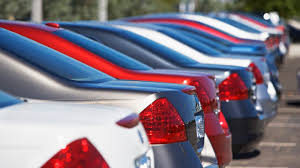As the monsoon season approaches, it’s important to be prepared for the potential risks and damages that heavy rainfall and flooding can cause to your vehicle. Car insurance plays a crucial role in protecting your investment and providing financial assistance in the event of an accident or damage. In this article, we will discuss some valuable tips on how to make the most of your car insurance during monsoon flooding. By following these guidelines, you can ensure that you are adequately covered and prepared for any unforeseen circumstances.
Understanding Engine Seizure and Hydrostatic Lock
One of the most common issues faced by car owners during monsoon flooding is engine seizure due to water ingression, also known as hydrostatic lock. This occurs when water enters the engine and prevents it from starting or functioning properly. It can happen when attempting to start a submerged vehicle or when restarting it after stalling in a waterlogged area. It’s crucial to understand that most insurance policies do not cover engine seizures caused by water ingression, as they are considered consequential damages rather than accidents.
Precautions to Take During Flooding
To avoid engine seizure and other damages caused by flooding, it’s important to take certain precautions. Here are some key steps to follow:
- Do not attempt to start your car: If your vehicle has been submerged in water, wait for the water to recede before trying to start it. Starting a flooded car can cause significant damage to the engine and other electrical components.
- Inform your insurance company: As soon as possible, contact your insurance provider and inform them about the situation. They will guide you on the next steps to take and may provide assistance in towing your vehicle to a designated garage for inspection.
- Avoid local mechanics: It’s advisable to avoid taking your car to a local mechanic for inspection, especially if the water has entered the cabin (passenger seat). Water damage can harm sensitive sensors and electrical equipment, which are better inspected by authorized garage professionals.
- Get your car inspected by an authorized garage: To ensure a thorough inspection and accurate assessment of the damages, it’s recommended to take your car to an authorized garage. This way, you can be assured that only factory-fitted parts will be covered by your insurance policy.
Disputes and Grey Areas
In some cases, disputes may arise between the policyholder and the insurance company regarding coverage for engine seizure due to water ingression. While it is generally considered a consequential damage, there are instances where it can be classified as an accident, especially if the driver was unaware of the water level and the car stalled unexpectedly. However, if the driver repeatedly tries to start the vehicle despite knowing the risks, it may be considered negligence.
Engine Protection Add-On
To avoid disputes and ensure comprehensive coverage, consider opting for an engine protection add-on to your car insurance policy. This add-on covers various damages to the engine, including hydrostatic lock. If you haven’t purchased this add-on when initially buying your policy, you can usually add it during renewal.
Covering Damaged Accessories
In the event of flooding, certain accessories and extra fittings in your car may also be damaged. It’s important to review your policy and check if it covers these additional accessories. If not, consider adding an appropriate add-on cover that reimburses for the cost of extra fittings. Prioritize covering accessories that are more exposed to potential damage, such as fog lights.
Roadside Assistance and Towing Coverage
Roadside assistance is a valuable add-on to consider when purchasing or renewing your car insurance policy. This coverage provides assistance in emergencies, including towing services. If your car is submerged and needs to be towed, having roadside assistance can save you from incurring significant out-of-pocket expenses.
Taking Precautions to Prevent Damage
While car insurance is essential for financial protection, it’s equally important to take preventive measures to minimize the risk of damage during monsoon flooding. Here are some precautionary steps to consider:
- Park your car properly: If you live in an area prone to flooding, park your car in a safe location, preferably on higher ground, to minimize the risk of water ingression.
- Avoid driving through waterlogged areas: Whenever possible, avoid driving through waterlogged areas, as it increases the chances of engine damage and other potential issues.
- Regular maintenance: Follow a regular maintenance schedule for your vehicle, including checking the condition of the tires, brakes, and electrical systems. This can help identify any existing issues that can be addressed before the monsoon season.
Conclusion
Monsoon flooding can pose significant risks to your car, but with the right car insurance coverage and preventive measures, you can minimize the potential damages and financial burdens. By understanding the limitations of your policy, opting for relevant add-ons, and taking necessary precautions, you can make the most of your car insurance during monsoon flooding. Remember to consult with your insurance provider for specific advice tailored to your situation and location. Stay safe on the roads and enjoy a hassle-free monsoon season!

No comments! Be the first commenter?